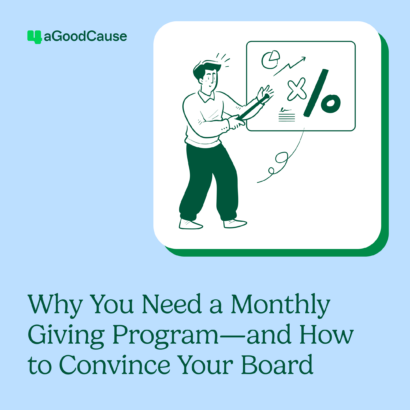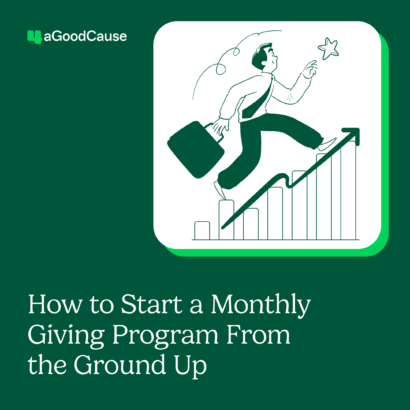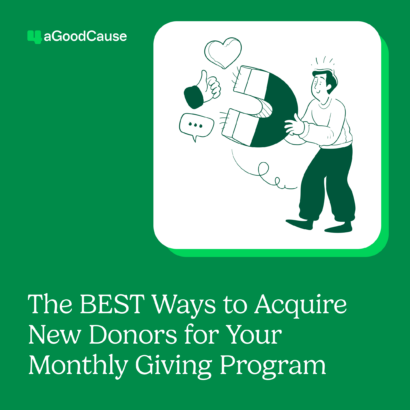A nonprofit is only as strong as its leadership and that can include your board of directors. And while most nonprofit boards are volunteer positions (which can be contingent on how much time those volunteers have to give) there are some great ways to engage with and set up your nonprofit board for success.
Here are some best practices for building a strong nonprofit board with a little help from our friends and experts in this area.
Recruit early and often
Successful board recruitment is something that continues to be a struggle for nonprofits. As BoardSource suggests, knowing the “what” first and then identifying the “who” will aid you in recruiting.
Likewise, ensure that you’re making connections with prospective board members prior to the time you in which you need them to serve on the board. In other words, you should be making connections throughout the years in order to develop trusted relationships with those you may ask to serve on your board in the future.
Looking for additional recruitment tips and strategies? This post is a great starting point.
Start strong with a solid orientation
We love these tips offered by nonprofit board expert Joan Garry around board orientations. Because, it’s one thing to get people on your board, it’s quite another to make sure they are clear about their roles, expectations and value to your organization.
As Joan mentions, your board members should be “ready to contribute on day one” and should always feel appreciated and confident in their role. We recommend using Joan’s Board Orientation Binder checklist for a solid way to kick-off orienting your board.
Set up effective communication strategies
When dealing with volunteers, communication is key; it is what will help guide accountability and ensure your board members feel supported and knowledgeable in what you are asking them to do.
Melissa Harrison, CEO of Allee Creative, has worked with nonprofit boards for 15+ years and offers the following ideas for setting up communication with your board:
- If the hope is to get your board to be supporting during fundraising campaigns, send weekly (or twice-a-month, monthly, whatever cadence you feel is best for your board) to provide a status update on what percentage you are to your goal, the number of donors and where most donations have come in from so far. This provides them with the lay of the land and can give them additional information on how they can tailor their asks.
- Send a monthly one sheet with copy-paste content your board members can put out on social media or through email. This takes the “thinking” off of them but still bring them into the process.
- Use Slack as a way to communicate with board members in real-time or to create channels around specific topics; this alleviates emails and provides you with the ability to have quick conversations vs. waiting for schedules to clear up to talk about quick-ticket items or updates.
“It’s all about working together,” Melissa states. “Providing support and letting your board know that you are in this with them will calm their fears. Provide marketing materials. Go over fundraising efforts, goals and programming during quarterly board meetings. Put contests in place for ‘Top Fundraiser’ or ‘Top Supporter’ for your board that isn’t around the money they personally give, but rather, about the additional people they rally for your cause in the community. Engaging your board is just as important as engaging the rest of your constituents.”
Don’t forget about the ‘ask’ to your board
Your board is a great way to support not only your organization but your fundraising efforts as well. If you haven’t put much clout in collaborating on fundraising initiatives with your board, get started by talking to other organizations that have been successful in getting their board to help with fundraising initiatives. Talk to the advancement and development teams about what has worked, what hasn’t and, what they’d love to be doing with their board in the future.
Gail Perry, president of FiredUp Fundraising, offers a few ideas for engaging your board in fundraising initiatives such as:
- Ask them to host a porch party to introduce new people to your cause
- Hold a thank-a-thon and ask board members to call donors to thank them
- Have board members handwrite thank you letters to donors
- Ask board members to identify possible donors in your community
When giving your board members these ideas, ensure them that you are their partner and will provide them with information along the way. If they are going to host a thank-a-thon, for instance, provide them with talking points and a guided script. If they host a porch party, be present at that event so you can answer any questions that may come up.
Ask your board members what they are comfortable with—not everyone will host a fundraising event or party. Some may be comfortable providing you with a list, others with making in-home asks for capital campaigns and others with posting on social media. Remember that just as fundraising is not one-size-fits-all, neither are your board members. Provide many opportunities for them to be involved directly with the fundraising process. For more ideas on how to engage your board in fundraising, check out Gail’s 10 fundraising responsibilities of every board member post.
Once you have an engaged board, the sky is the limit! Secure those relationships and watch your organization thrive.



